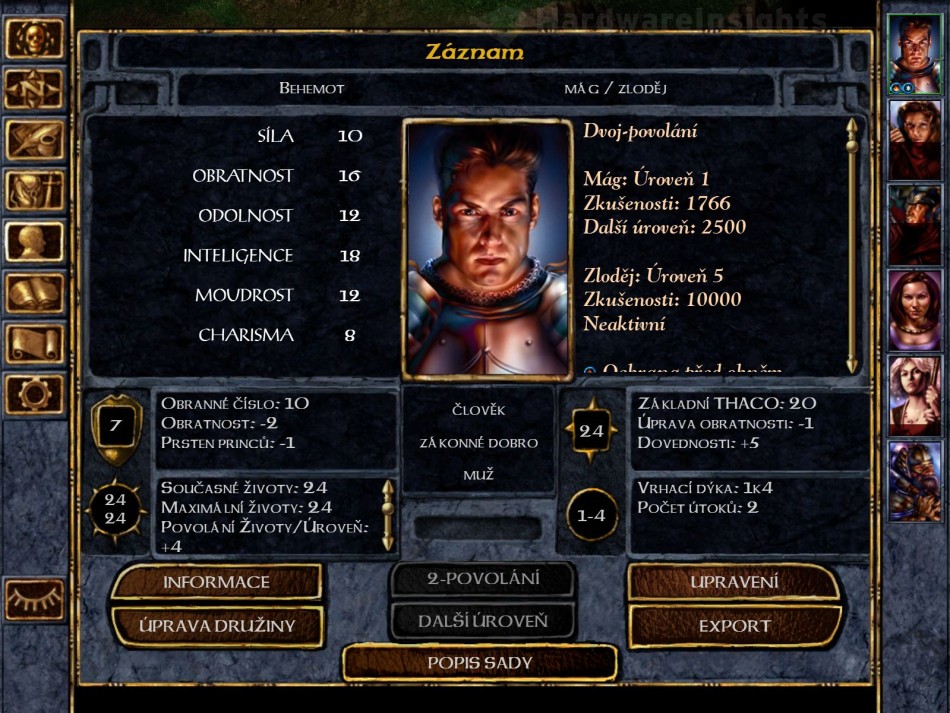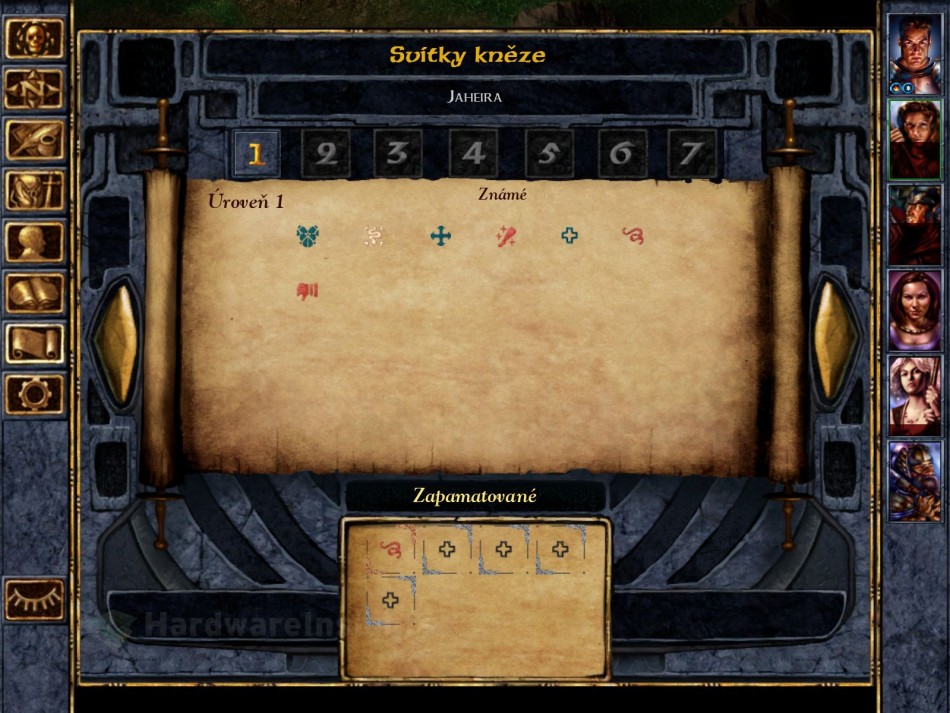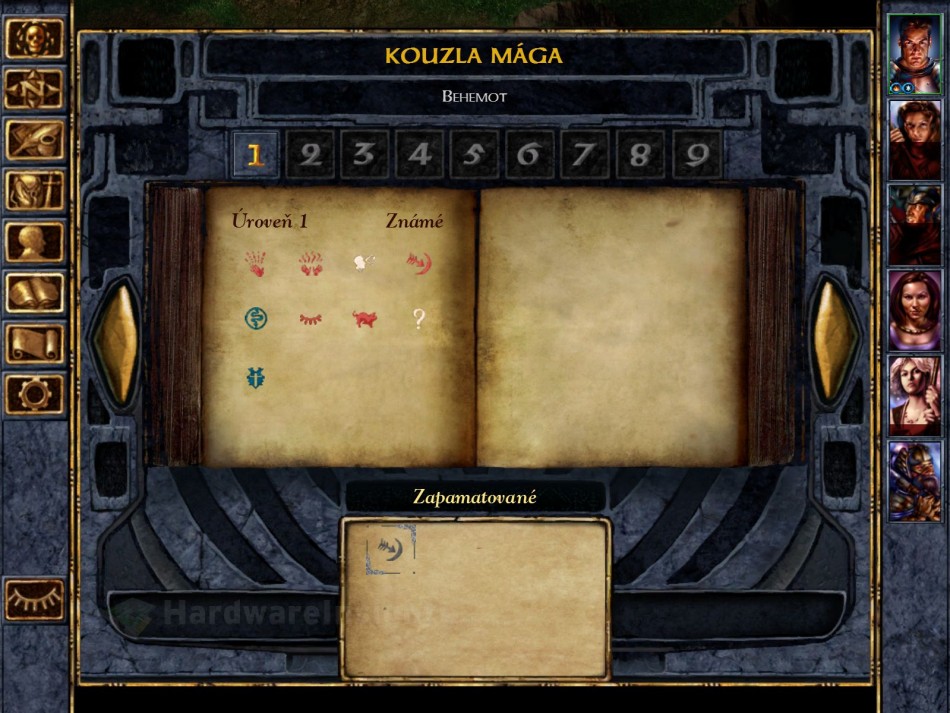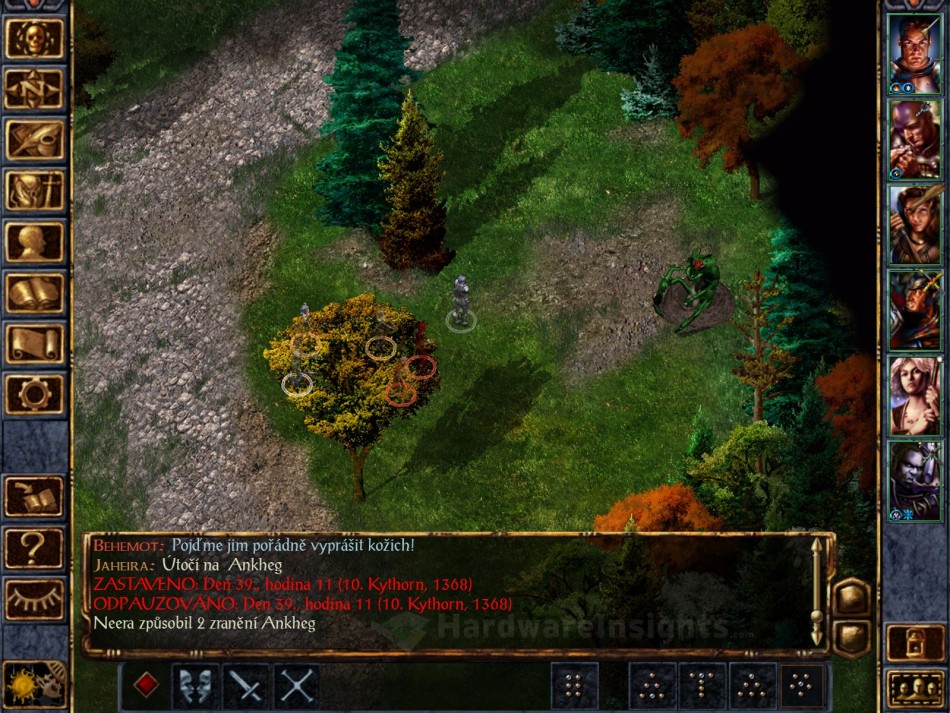Contents
Characters & classes
In normal game you can directly control up to six characters. Your main character is like a “yourself”. When first starting the game, you can use some pre-created characters or make up your own. Every character has its own profession, it is then called character class. There are four classes (warrior, priest, wizard and rogue) which are than subdivided into subclasses. For example warrior divides into fighter, paladin, ranger and barbarian. These then even divide further into class-kits, each kit gives you certain extra bonus but usually also some penalty. For example fighter-wizard slayer has magic resistance and makes enemy wizards to fail their spell, but cannot use many magical items.
There is also the possibility of multi-classing and dual-classing. Pure humans can not multi-class but they can dual-class instead. When they select their second class, they cannot advance the first class anymore and can not even use it until their second class surpasses the first one by at least one level. Since that exact moment they can use both. Multiclassing is for the other races or race crossbreds which can select two or even three classes. Both multi- and dual-classing gives you many advantages but also some disadvantages (even more limited choice of weapons or armors).
Multi-class characters usually reach lower level as they have to split the experience between two classes. And the really interesting stuff in Baldur’s Gate II starts with really high levels. But then they get new level on some of their classes twice (or even three times) as often, so in the end it is more or less similar to single-class character. All the classes which could cast some type or spells have ther spellbook, either mage or priest spellbook. They have to learn the spells (mages from scrolls, priests get them automatically) and then memorize all the spells they want and can (maximum number of spells you can memorize depends on your level and stats, intelligence for mages or wisdom for priests). Then you can only cast the spell so many times you memorized it, until you sleep and re-memorize again. Certain items can give you extra memory slots or also increase the casting speed.
Races and beasts
As I have already implied, there are many races in the game. Besides humans, there are elves, orcs, halflings, dwarves and gnomes, plus their crossbreds. These are both playable and non-playable characters (and enemies). Amongst other beasts, enemies are basically humanoid and non-humanoid ones, including animals. Humanoid beasts include the taslois, gibberlings, golems, gnolls, dryads, sirens, xvarts, ogres, giants and some others. Animals are all kinds of bears, dogs, wolves, cats, cows, horses, spiders, ankhegs or umber hulks (giant bugs) and many more. Other creatures are some kinds of slime, undead (many forms from skeletons to ghouls, ghasts, mummies) or different kinds of demons.
Amongst the toughest-to-kill especially from the beginning (or if not equipped with protective spells or potions) are the basilisks (capable of turning you into stone), vampiric wolfes (paralytic), wolfweres (heavily self-healing when they sucessfully hit you) or wyverns. Wyverns are closest you get to a dragon, as dragons are very powerful and you cannot acheive high enough level even in this game. When we are touching this area, I may as well talk a bit about leveling.





